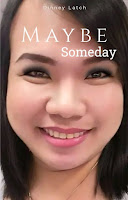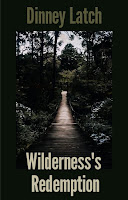The Atheist - Chapter 6: Media Frenzy
The campus was no longer a cocoon of academic discourse; it had become a focal point of a nationwide debate.
News outlets and social media platforms buzzed with discussions about the ongoing clash of ideologies between Emily Davis and Adrian Hartley.
The once-contained debates had spilled over into the public sphere, captivating believers, skeptics, and curious onlookers alike.
Headlines splashed across newspapers proclaimed, "Theologian vs. Atheist Philosopher: Clash of Beliefs Divides Campus."
Television talk shows dedicated segments to analyzing the arguments, with pundits and experts sharing their own perspectives on the matter.
Social media exploded with hashtags like #FaithVsReason and #UnveilingTruth, as people from all walks of life chimed in with their thoughts.
Amid the media frenzy, Emily and Hartley found themselves thrust into the spotlight.
Reporters clamored for interviews, seeking their insights on faith, atheism, and the importance of open dialogue.
Emily's calm demeanor and passionate conviction resonated with believers seeking reassurance, while Hartley's articulate skepticism intrigued those who questioned the validity of religious beliefs.
The lecture halls that once held only students were now filled with visitors from near and far, eager to witness the intellectual battle between these two formidable minds.
Class discussions transformed into public spectacles, each debate more intense and fervent than the last.
Emily and Hartley's interactions had evolved beyond mere debates; they had become a symbol of the power of civil discourse in a polarized world.
Their willingness to engage in thoughtful conversations and their ability to listen to opposing viewpoints resonated with people hungry for understanding amidst the noise of disagreement.
As the media coverage intensified, Emily and Hartley felt the weight of their roles in this larger narrative.
They were no longer just individuals challenging each other's beliefs; they were now symbols of hope for a world in which conversations about faith and reason could coexist harmoniously.
And as they navigated the growing attention and scrutiny, they discovered that their shared journey was not just about proving a point but about fostering connection and empathy in the face of profound differences.
The once-contained debates had spilled over into the public sphere, captivating believers, skeptics, and curious onlookers alike.
Headlines splashed across newspapers proclaimed, "Theologian vs. Atheist Philosopher: Clash of Beliefs Divides Campus."
Television talk shows dedicated segments to analyzing the arguments, with pundits and experts sharing their own perspectives on the matter.
Social media exploded with hashtags like #FaithVsReason and #UnveilingTruth, as people from all walks of life chimed in with their thoughts.
Amid the media frenzy, Emily and Hartley found themselves thrust into the spotlight.
Reporters clamored for interviews, seeking their insights on faith, atheism, and the importance of open dialogue.
Emily's calm demeanor and passionate conviction resonated with believers seeking reassurance, while Hartley's articulate skepticism intrigued those who questioned the validity of religious beliefs.
The lecture halls that once held only students were now filled with visitors from near and far, eager to witness the intellectual battle between these two formidable minds.
Class discussions transformed into public spectacles, each debate more intense and fervent than the last.
Emily and Hartley's interactions had evolved beyond mere debates; they had become a symbol of the power of civil discourse in a polarized world.
Their willingness to engage in thoughtful conversations and their ability to listen to opposing viewpoints resonated with people hungry for understanding amidst the noise of disagreement.
As the media coverage intensified, Emily and Hartley felt the weight of their roles in this larger narrative.
They were no longer just individuals challenging each other's beliefs; they were now symbols of hope for a world in which conversations about faith and reason could coexist harmoniously.
And as they navigated the growing attention and scrutiny, they discovered that their shared journey was not just about proving a point but about fostering connection and empathy in the face of profound differences.






Comments
Post a Comment